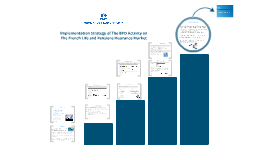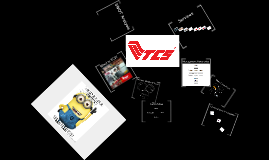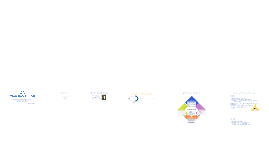TCS CASE PRESENTATION
Transcript: Porter's 5 Forces Changes in Business Environment RESULTS OUR STRATEGY PROCESS: Introduction to Tata Consultancy Services (TCS) Our Strategic Process Strategic Diamond Connection to Articles CONTRADICT The internalization of born globals (1977) Born globals - export >75% of sales within first 2 years TCS was founded in 1968, 1. export activity in 1974 TCS challenege - transfer into a totally global company STRUCTURE References Prepared and Presented By : Naman Juneja STRATEGIC OPTIONS Q1: Should TCS partner with packaged software makers such as Oracle & SAP or compete with them? Q2: Should TCS continue price leadership or move more aggressively into premium services such as management consulting and complete business solution delivery? Q3: In the absence of stock options, what kind of incentives should TCS put in place to account for geographic cost of living and resource competition? Q4: Should TCS grow organically or through acquisitions? Q5: Should TCS recruit and promote executives from countries where the company has a significant amount of business? STRATEGIC CHALLEGE/VISION TCS is a multinational IT services, business solutions & outsourcing services organization TCS is part of the Tata Group, one of India's largest industrial conglomerates TCS has over 254,000 of the world's best-trained IT consultants in 44 countries Strong Resource Pool Recruits employees locally Specialised services customized to client's needs Global Reach Broad Service Portfolio Corporate Social Responsibility Porters 5 forces Key success factors Changes in business environment may effect performance ENVIRONMENTAL ANALYSIS a a COMPANY ANALYSIS CONFIRM The internationalization process of the firm (1977) Uppsala model : step-by-step, incremental internalization TCS export services; association with local firms, leading to acquisition in some cases; hire local consultants. Institutional differences and the development of entrepreneurial ventures (2009) Institutional framework: Regulatory- e.g. government control of equipment purchasing Normative-e.g. the break with Burroughs Cognitive CONNECTION TO ARTICLES Q1: Partnership with package software makers Q2: Price leadership segments and premium services Q3: Implementation of cash incentives Q4: Continued focus - organic growth Secondary focus - acquisition Q5: Global company need global employees Conclusion IMPLEMENTATION Marketing Mix INTRODUCTION TO TCS "Corporate Strategy." : Investor Relations: TCS. TCS, n.d. Web. 21 Sept. 2014. "Tata Consultancy Services Ltd." TCS: Reports, Company History, Directors Report, Chairman's Speech, Auditors Report of TCS. NDTV Profit, n.d. Web. 16 Sept. 2014. "Tata Consultancy Services Posts Strongest Growth in 3 Years - The Times of India." The Times of India. Times of India, 18 July 2014. Web. 24 Sept. 2014. "Tata Logo." Famous Logos RSS. Famous Logos, n.d. Web. 16 Sept. 2014. COMPETITIVE ADVANTAGE "By 2010 we want to become a $10 Billion-a-year company producing 25% margins" - S. Mahalingam (Chief Financial Officer, TCS) "...transforming ourselves from a totally Indian company to a totally global company without forgoing labour cost arbitrage" - S. Mahalingam ARENAS VEHICLES STAGING DIFFERENTIATORS ECONOMIC LOGIC STRATEGIC DIAMOND A Wide range of IT services & unique IT software MNEs, SMEs Global TCS BaNCS, TCS MasterCraft & TCS Technology Products Technology Labs, Domain Labs & Academic Labs Organic Growth Alliance & Patnership Acquisitions 1968 - TCS Inception 1970 - Burroughs Alliance 1980s- Competing with Western consultencies, Software Migration Factory 1990s- TCS answers the client server call, TCS addresses the Year 2000 Problem, TCS misses Internet Revolution 2000s- TCS catches the cost-cutting & Sarbanes-Oxley compliance wave, $10 Billion revenue target, Q3: Incentives in absence of stock options Cash incentives Rewarded for company performance above industry benchmark/average. Non-financial benefits Q4: Organic growth Organizational knowledge and learning↑ Spread the investment over time No availability constrains Limitations of own capabilities Q5: Not only ethnocentric approach in HR Global company need global employees Acquisitions Extension to new markets, to build global presence Consolidate the competition Capabilities↑ Difficulty to find a strategic and organizational fit Risk of failure↑ Hostile Cost Labour Arbitrage Increasing employment Innovative solutions at premium prices Expansion of employment pool Technical excellence, reputation & pioneering spirit Innovation of customized software migration solutions Ranging from Price Leadership to Premium Prices Best trained IT consultants in the world PORTER'S 5 FORCES NEW ENTRANTS CUSTOMERS SUBSTITUTES SUPPLIERS COMPETITIVE RIVALRY INCUMBENTS AREA CHANGES IN BUSINESS ENVIRONMENT Took advantage of a change in legislation in 2002 – SOX Act section 201 Sustaining competitive advantage in a changing environment Measures the ability of companies to enter your market Few can compete This

















